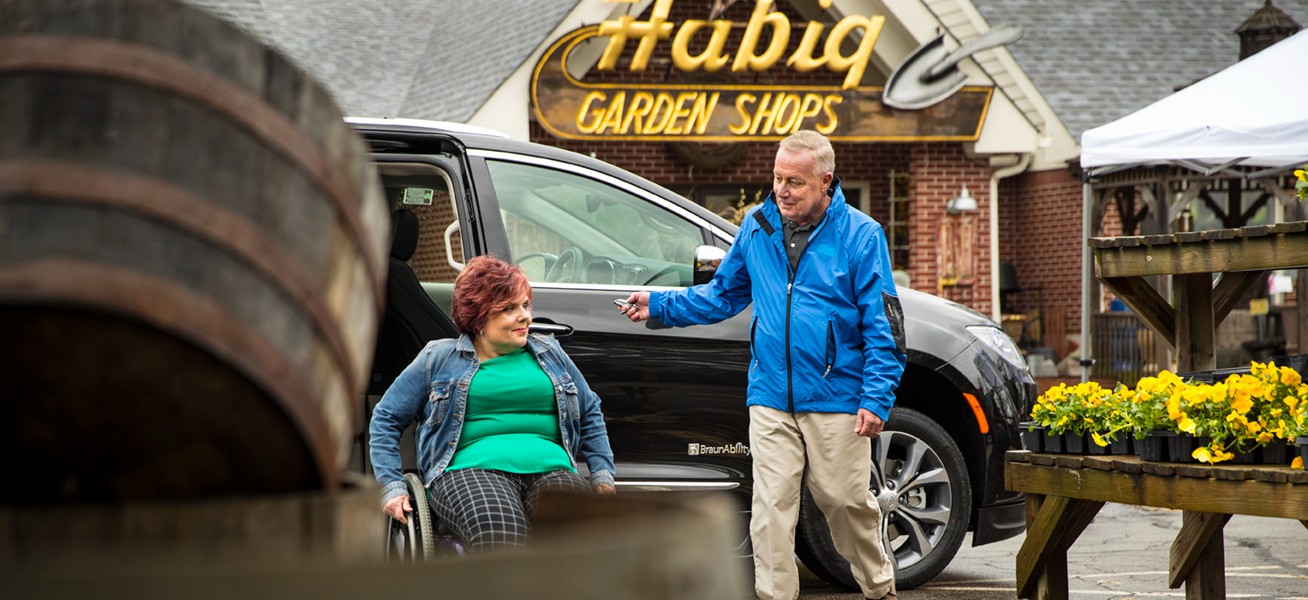
Accessibility is paramount to many activities and features of life. Most people don’t have to think twice before going somewhere, but for people with disabilities, that concept might be troublesome. In fact, the World Health Organization estimates that approximately 1 billion people worldwide have disabilities and 61 million of those people live in the U.S.
According to these figures, a significant portion of that population has mobility restrictions which makes it important for shopping centers, restaurants, and other public spaces to be wheelchair accessible. This might seem like it’s as simple as installing a ramp here and there, but that’s not enough. The entire facility needs to be compliant with the Americans with Disabilities Act (ADA) to be considered fully wheelchair accessible.
What is the Americans with Disabilities Act?
The Americans with Disabilities Act (ADA) is a federal civil rights law enacted in 1992. The law prohibits discrimination against people with disabilities. It also gives them the same opportunities as their non-disabled peers have, in order to participate fully in society. Apart from equal opportunities, the law also requires public facilities to be fully accessible to wheelchair users for maximum comfort.
Features that Make a Facility Wheelchair Accessible
Wheelchair-accessible facilities are not just reserved for wheelchair users. They are equally beneficial for users with other mobility devices, such as walkers and crutches. To be fully wheelchair-accessible, the facilities must follow the following accessibility guidelines:
1. Accessible Parking Spaces
For a facility to be wheelchair accessible, one of the most basic requirements is to have accessible parking spaces. Vehicles with handicapped placards or license plates have access to designated parking spots. These spots must be strategically placed so people using a wheelchair can get out of their vehicles and enter buildings efficiently and safely.
2. Accessible Transportation Facilities
It is important to have reliable transportation so wheelchair users can reach their desired destination without difficulty. Companies like Clock Mobility provide top-notch wheelchair-accessible vehicle sales and rental services to wheelchair users and their families. To comply with the ADA, transportation vehicles must include:
- Level boarding, which means providing a motorized platform that raises and lowers so that users don’t have to climb up or down stairs to get off the vehicle.
- A securement system for wheelchairs and scooters.
- An audible and visual communication system for people with vision and speech disabilities.
- Accessible routes between platforms and buses.
 3. Wheelchair-Accessible Ramps
3. Wheelchair-Accessible Ramps
Just like accessible transportation, ramps are equally important for individuals with disabilities to enter buildings. They provide a smooth surface for wheelchairs to travel on and reach without the need for steps. To be ADA accessible, ramps must meet specific requirements regarding slope, handrails, width, and landing areas. The ramp specifications are as follow:
Width: A minimum of 36” width is required to accommodate a wheelchair user. Even if a person uses a walker or crutches, the ramp needs to accommodate at least two people side by side.
Slope: Ramps should never be steeper than 1:12. It means for every inch of the vertical rise, there should be 12 inches of horizontal run. It must also include handrails on both sides of the ramp for maximum stability.
Landing: The ramp should have landing areas at regular intervals in case someone needs to rest or change direction.
4. Wheelchair-Accessible Elevators
Elevators and lifts are alternatives to ramps, allowing people in wheelchairs to travel between different levels of buildings with ease. There must be adequate space (usually 36 inches wide with 15 sq. ft. of clear floor area) for maneuvering inside the elevators.
5. Easy To Use Doors
Doors can create a significant challenge for wheelchair users while entering and exiting different rooms in a building. If they are not wide enough, the wheelchair won’t fit through the opening and make it impossible to get around. The facility should include an automatic sliding door with 32” of clearance at all times. Doors must also have an easy-to-use handle or lever.
Americans with Disabilities Act FAQ
What is an ADA-compliant location?
ADA compliant locations are those that have gone the extra mile to make their entire facility accessible to individuals with disabilities. That means the bathrooms are built to accommodate the width of a wheelchair, there are bars in the bathrooms that make it easy to transfer from a chair and there’s a ramp at the location making ingress into the building easy.
What makes a place wheelchair-accessible?
To be ADA compliant, a location must offer non-discriminatory services and accommodation to wheelchair users. These facilities must include curbless entryways, ramps with handrails, and well-lit pathways at night. It must also include handicap-friendly bathroom stalls and grab bars for maximum safety
Is wheelchair access a legal requirement?
Federal law requires all new public accommodations and commercial facilities to follow specific standards and guidelines to be fully accessible to disabled people. The requirements are strict in Michigan but are more more stringent in some states, such as West Virginia and Oregon – typically places where many people with disabilities reside.
Whether you are building a new facility or updating the old one, it’s important to be ADA compliant. This way, wheelchair users will be able to get around and enjoy their lives without any additional stress.
